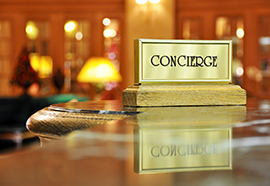Hotel Services Innovation Program
-
Category: Hospitality
Methods: Qualitative Research, Ideation, Quantitative Research, New Product Concept Development & Refinement, Advanced Analytics, MaxDiff Latent Class Choice Model
Summary
A major hotel chain was interested in developing relevant and actionable new products and services designed to target the business traveler, and to project potential market appeal for each concept. We addressed these needs using Decision Analyst’s Qualitative Research and Innovation Team to identify and develop new product and service concepts. Once the new product and service concepts were developed, Decision Analyst then used quantitative research combined with advanced analytics to identify the new concepts with the best potential for success.
Strategic Issues
The U.S. hotel and motel industry consists of about 30,000 companies operating about 50,000 individual locations. Since the majority of hotels are part of a chain, the 50 largest companies account for about 45% of the market.
Profitability for a hotel depends on the efficiency of the hotel, name recognition, and how effective its marketing is in attracting customers. Business travelers and tourists are the primary customer segments. Our client, a national hotel chain, wanted to increase their market share of business travelers. They wanted to develop innovative new services that could differentiate their brand from competing brands, drive customer preference, and increase revenues.
Research Objectives
The objective of the research was to create an approach for generating and developing innovative new product and service concepts for business travelers. Once the concepts had been developed, a methodology for testing those concepts was created.
Research Design and Methods
Decision Analyst designed a three-phased research program for this client, incorporating qualitative research, ideation, and quantitative research with advanced analytics.
Phase One: Qualitative Research
The first stage was qualitative research conducted among business travelers. This stage yielded several key areas of opportunity, or ideation springboards, that were used as the basis for the next step. These springboards focused on consumer motivations, underlying needs, and emotions related to travel. These springboards were presented to the client, and several of the areas were selected for further ideation.
Phase Two: Ideation Session
The second stage consisted of an ideation session, generating numerous “starter ideas” and concept fragments. These were presented to the client, and the client selected a number of “starter ideas” for further development by our Insights & Innovation Team. A total of 16 full-fledged concepts were developed. These were further evaluated based upon the client’s objectives and the consumer needs uncovered in Phase One. Management then selected nine of these concepts, plus a number of “concept elements,” for final quantitative evaluation.
Phase Three: Quantitative Evaluation
In Phase Three, an online study was undertaken among 1,300 business travelers, selected from Decision Analyst’s American Consumer Opinion® Online panel, with quotas set by usage segments. This study was used to quantify the market potential for each concept, and to develop utilities for each concept element, using a MaxDiff latent class choice model.
Results
Results from this study were used to select the two concepts with the highest market potential within key consumer segments. In addition, the utilities developed for each concept element were used to suggest modifications to these winning concepts by identifying elements that could be dropped from the concepts without significantly changing their appeal, as well as those elements that could be added to enhance appeal.
Innovation Services
For more information on our Marketing Research for New Product/Service Development, Jerry W. Thomas, President/CEO (jthomas@decisionanalyst.com), or Clay Dethloff , Senior Vice President (cdethlo@decisionanalyst.com), or call 1-800-ANALYSIS (262-5974) or 1-817-640-6166.


